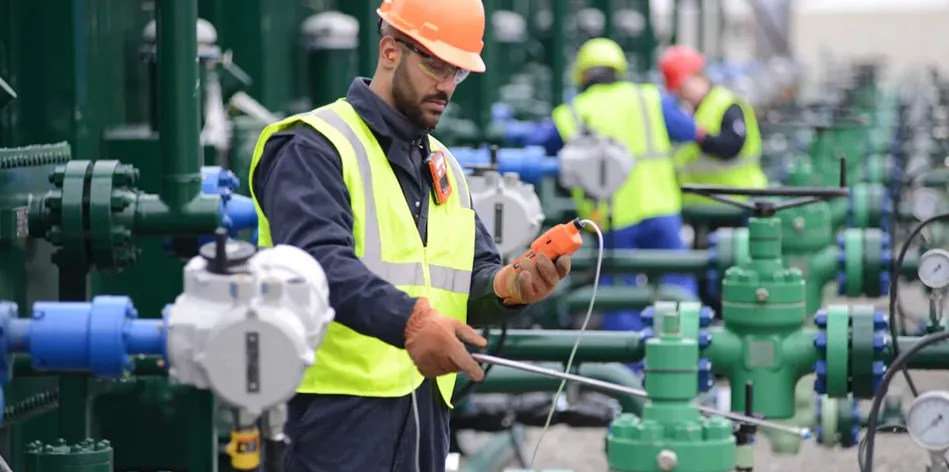KYLE KRUEGER | WEDNESDAY, JUNE 19, 2019
To borrow a phrase from The Wizard of Oz, we in the safety industry are “not in Kansas anymore.” Those old familiar spreadsheets, processes, and equipment that got us to where we are today aren’t going to get us where we’re going. We’re stepping into the Land of Oz where big data, IoT, and connected safety form the yellow brick road we’ll follow.
As someone who has grown up in the safety industry, it is exciting to see these changes, and frankly, about darn time. But are we as an industry ready for what’s next?
In general, I think our hearts are in the right place: we want to invest in technology with the hope that the return on investment (ROI) will be safer, more productive workplaces.
So what’s the catch?
The heart of the matter is that as an industry, we haven’t typically valued data. It isn’t instinctual yet. To be candid, technology hasn’t earned our trust in the way our human relationships have. Additionally, many still conflate more data with more risk and therefore shy away from innovations that bring more data.
It’s OK if we need to take a minute to collect our breath. There’s a lot of data out there to sift through, but we don’t need to be intimidated by it.
Here are four things we can all do to prepare ourselves for what’s next.
Start with one or two goals.
Regardless of the size of an investment, we need to focus on slow and steady improvements. Before we can turn your office into a virtual command center with more dashboards than an airliner, we need to teach you the basics of flying. Nothing is worse than take off followed by an epic crash landing. To avoid the crash, gather a tight scope with set measurable goals. For some organizations, this might be as simple as, “I want to make sure that every gas detector is calibrated this month” or “I want to make sure monitors aren’t being turned off while in alarm.” Start with one or two goals and expand once you start meeting them. Look into high-impact investments that can get you to 80% of the way. It’s quite possible that basic connected packages will get the job done.
Be mindful of materialism.
It looks so smooth! Did you see that glowing dot on the map? As a fan of design, I really admire great user interfaces and features. When used correctly, they enhance the experience and foster more engagement.
But there is a tendency within all of us to get too caught up in the material aspect, only to have the fundamental intention go to waste. I have interacted with too many clients who are excited about data, yet don’t log in for over a year or use the reports. Let’s face it: we all have that thing we excitedly bought that now lays around collecting dust.
This year, many of us will invest in our first connected safety devices. It will mark a turning point in the safety industry. Accordingly, we have an obligation to our companies, users, and the concept of connected safety to demonstrate the highest ROI possible. Please buy the shiny objects. Just make sure to use them.
Invest in skills.
This wave of connectivity, data, and ROI will push organizations toward demanding more efficiency from employees. Aspects of our jobs could be automated, or eventually disappear. This means we need to understand what the data shows us and then fully leverage it so we don’t become obsolete.
Understanding how to use the data to make more informed decisions will be the challenge ahead.
Many safety groups now have grass roots movements for collective skill development. Let’s be proactive about adapting so we’re not left behind.
Clear eyes, full hearts, can’t lose.
Aligning technology capabilities with your organization’s safety goals and philosophies is vital. Deep down, figure out why you want this awareness and what you are going to do with it. Without a doubt, this won’t be a completely smooth ride. Equipment (specifically gas detectors) will still break and people will drag their feet against change. If people will be monitored and tracked, we owe them a solid explanation of why. We’ll need a strong commitment from all stakeholders, especially the people wearing the devices, to successfully implement a “connected” program.
Our yellow brick road is made of data and dashboards from connected safety devices. It will also have its fair share of beasts along the way. “Safety Oz” can be a shining capital city where death in the workplace is a thing of the past. But to get there, we need heart, courage, and brains. HSE managers, grab your little dog, here we go!
Kyle Krueger is a district manager at Industrial Scientific Corporation. A version of this article appeared in the May 2019 issue of ISHN.
Learn more about connected safety solutions from Industrial Scientific.


